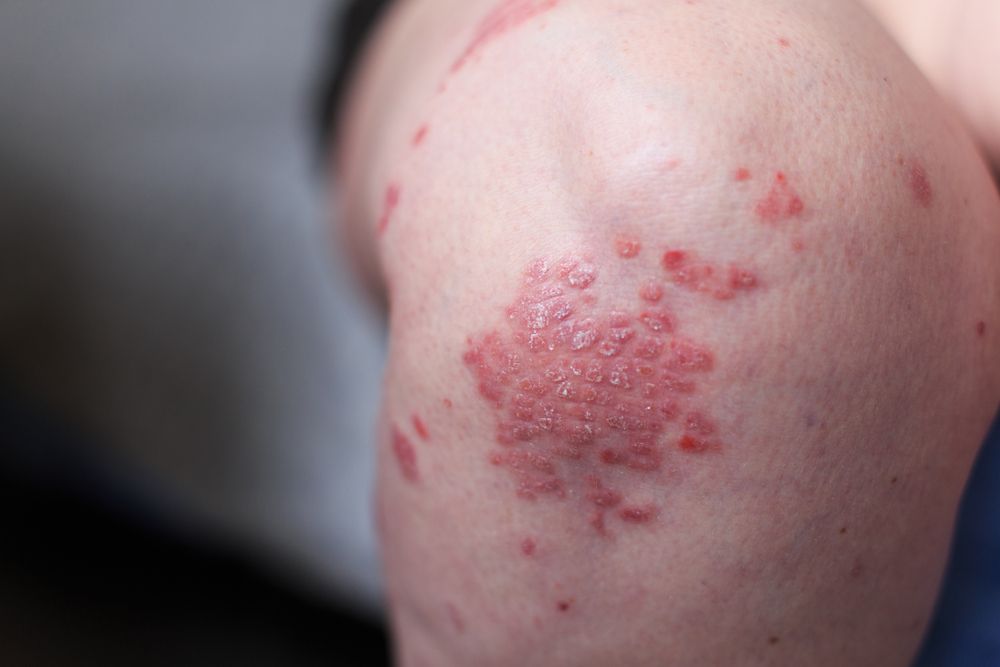- Acne
- Actinic Keratosis
- Aesthetics
- Alopecia
- Atopic Dermatitis
- Buy-and-Bill
- COVID-19
- Case-Based Roundtable
- Chronic Hand Eczema
- Chronic Spontaneous Urticaria
- Drug Watch
- Eczema
- General Dermatology
- Hidradenitis Suppurativa
- Melasma
- NP and PA
- Pediatric Dermatology
- Pigmentary Disorders
- Practice Management
- Precision Medicine and Biologics
- Prurigo Nodularis
- Psoriasis
- Psoriatic Arthritis
- Rare Disease
- Rosacea
- Skin Cancer
- Vitiligo
- Wound Care
Article
The multifaceted faces of arthritis in psoriasis
Author(s):
For psoriasis patients, the most common comorbidity they may experience is psoriatic arthritis. Knowing how to identify and treat it can be critical.
For psoriasis patients, the most common comorbidity they may experience is psoriatic arthritis. Knowing how to identify and treat it can be critical. (©TernavskaiaOlgaAlibec/Shutterstock.com)

CHICAGOâFor psoriasis patients, the most common comorbidity they may experience is psoriatic arthritis. Knowing how to identify and treat it can be critical.
That’s why Amit Garg, M.D., a dermatologist with Northwell Health, discussed the need for better psoriasis arthritis understanding at the National Psoriasis Foundation’s 20th annual Residents Meeting recently held in Chicago. Giving residents the knowledge needed to more readily identify this condition can augment patient results, he said.
“We know psoriatic arthritis can be managed in such a way that outcomes are ultimately improved for the patient,” he said. “That’s important because psoriatic arthritis can lead to symptoms that can damage the joints, resulting in possible disability.”
Even though these patients are largely under the observation of a primary care doctor, he said, dermatologists are in a good position to recognize psoriatic arthritis in its earlier stages. But, to do that in practice, residents must be able to pinpoint features specific to psoriatic arthritis that differentiate it from other types of arthritis that can also occur in psoriasis patients, including osteoarthritis and gout. For example, they should know how to identify inflammatory musculoskeletal disease, as well as pain, redness, or swelling in the small and large joints.
In addition, Dr. Garg said, residents should remember to ask patients about any prolonged joint stiffness that could present in the hands, feet, heels and back. Imaging, such as ultrasound and MRI, can also be helpful in revealing the presence of any inflammatory arthritis, including erosions or periostisis.
Overall, he said, it’s important for residents to be able to identify psoriatic arthritis because it puts them and their primary care colleagues on the right path for treating the patient.
“If you understand there is inflammatory involvement of the joints in patients with psoriasis, you can select therapies for the specific problem,” he said.
Ultimately, while early identification can profoundly affect a patient’s well-being, residents should remember pinpointing the condition doesn’t necessarily need to be complicated.
“This doesn’t have to be a heavily burdensome evaluation. Taking a good review of symptoms, inspecting the hands and feet and maybe even a few simple exam maneuvers could lead to a lot of improvement in a relatively quick amount of time,” he said. “This type of extra cutaneous evaluation doesn’t have to happen at every visit for every patient. Gauge the inflammation involvement in their joints once every year.”
REFERENCE
Garg, A. “Recognizing Psoriatic Arthritis,” 20th Residents Meeting National Psoriasis Foundation, Chicago, Illinois. Oct. 20, 8:45-9:30am.
Newsletter
Like what you’re reading? Subscribe to Dermatology Times for weekly updates on therapies, innovations, and real-world practice tips.







